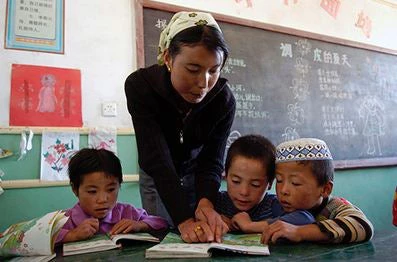In recent years, a broad consensus has emerged on the fact that investing in young children is one of the best investments countries can make. And yet while investments in early childhood development (ECD) should be a priority, many countries fall short. Tomorrow, the World Bank will release two new publications to serve as resources for those aiming to invest in ECD, whether they are government agencies, nongovernmental organizations (NGOs), or private firms.
The first publication, titled Stepping up Early Childhood Development: Investing in Young Children for High Returns, provides a simple framework for thinking about investments in ECD. It describes and reviews available evidence on 25 essential interventions that have been identified as essential for a child’s growth and development (see figure below).
These interventions can be delivered through five packages at different stages in a child’s life: (i) a family support package to be provided throughout the ECD period, (ii) a pregnancy package, (iii) a birth package (from birth to 6 months), (iv) a child health and development package, and (v) a preschool package. In addition to these essential interventions and integrated packages, in order to create well-performing ECD systems, the guide calls for countries to be mindful of four policy principles. Countries should (1) prepare a multi-sectoral ECD diagnostic and strategy; (2) implement widely through effective coordination mechanisms; (3) create synergies and cost savings among interventions; and finally (4) monitor, evaluate, and scale up successful interventions. These principles also apply to a large extent to NGOs and private firms.
The second publication, Investing in Early Childhood Development: Review of the World Bank’s Recent Experience, indicates that operational and analytical investments in ECD have increased sharply in recent years at the World Bank.
The review considered activities implemented from June 2000 to July 2013 within the Bank’s Education, Health-Nutrition-Population, and Social Protection-Labor Global Practices. Over 13 years, the three Global Practices invested $3.6 billion in ECD in 2013 U.S. dollars (in nominal terms, the amount was $3.3 billion). In addition, all geographic regions invested substantially, but the Africa and Latin America and Caribbean regions led the way with the largest IBRD and IDA investments, respectively.
Between fiscal years 2001 and 2011, commitments remained relatively stable in real terms, but in fiscal years 2012 and 2013, they more than doubled, and the trend has continued in 2014. An increase has been observed for both operations and analytical and advisory work. This increase in investments in ECD was related in part to a number of recent policy statements made by the World Bank on the importance of ECD, among others for nutrition, education, and social protection.
To gain an understanding of which investments worked well, or required improvements, seven operations were selected for more detailed analysis. The review highlights six lessons from those case studies: (1) Designing ECD projects, due to their complexity and the time lag between investments and impacts on children’s development, requires careful attention to results frameworks, monitoring and evaluation, and a clear definition of roles and responsibilities of all actors; (2) Commitment from all levels of government as well as local communities is crucial; (3) Parents are key stakeholders who should be included in project design and implementation; (4) Coordination across sectors and administrative levels is essential; (5) Projects should be designed to ensure that quality interventions are accessible and culturally relevant to all children, and especially those facing disadvantage; and finally (6) Knowledge exchange (e.g., south-south activities) can be valuable exercises to improve ECD systems.
None of these findings are surprising, but the case studies suggest how good practice in these areas leads to better outcomes.
Finally the review mentions a number of new initiatives taken over the last few years, including (1) the ECD module of the Systems Approach for Better Education Results (SABER) framework, which aims to provide a holistic multisectoral assessment of programs and policies that affect young children’s development; (2) the eLearning ECD module of the World Bank’s Education Staff Development Program, which brings together theory, practice, and shared experiences so that ECD policymakers and practitioners can engage in informed policy dialogue and decision making (on the eLearning, see this blog post); and (3) the Early Learning Partnership (ELP) initiative, an innovative program initially focusing on the Africa region to promote scalable, sustainable, and impactful approaches for young children’s development and early learning. The ELP program is now becoming global and is being scaled up substantially thanks to support from the Children Investment Fund Foundation.
The evidence in the literature on the returns to investments in ECD is clear. Investing in ECD has high potential to help eliminate extreme poverty and promote shared prosperity. The demand from client countries for investments in ECD is rising, and the World Bank has scaled up its operational and analytical portfolio in this area.
On Dec. 16, 2014 at 12:45 pm ET, the World Bank and Global Partnership for Education will convene a panel discussion of policymakers and practitioners on Stepping Up Early Childhood Development: An Investment for Life. Watch the webcast (in English and French) and follow the discussion on Twitter using #InvestEarly.
Follow the World Bank Education team on Twitter: @WBG_Education
Related:
Webcast: Stepping Up Early Childhood Education: An Investment for Life
World Bank and Early Childhood Education
Video: In Mozambique, Preschool Adds Up




Join the Conversation